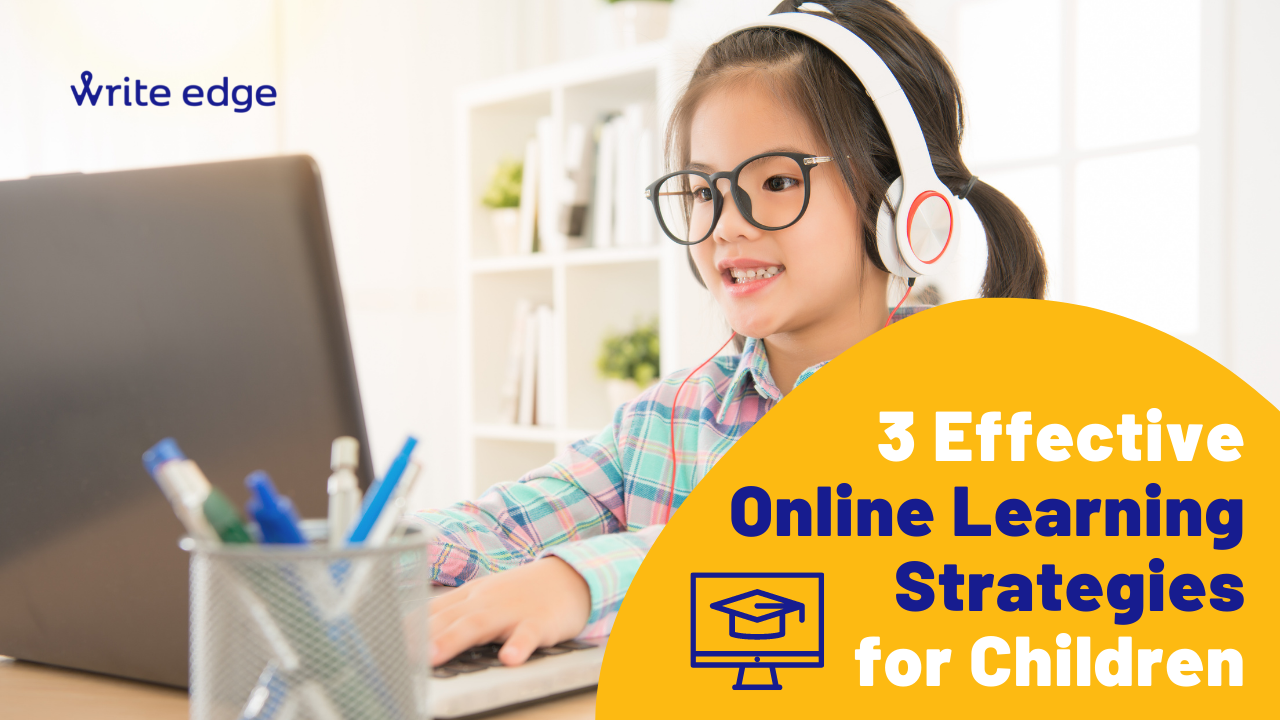With the chaos of the pandemic, children, parents, and educators alike have been forced to quickly adapt to online learning amidst the uncertainty. “Zoom”, “Google Classroom”, “Kahoot”, and other terms once unbeknownst to us have somehow become ubiquitous – woven into our daily lives. Seeing that online learning is here to stay, many parents may be curious about how children can learn more effectively online. In this article, we will discuss 3 effective online learning strategies, and how to use them to empower your children in the virtual space.
(1) Planning out learning and revision
Planning what you are about to do in the day is almost just as important as carrying out the plan. Having a consistent schedule for learning and revision helps children stay on task despite the lack of structure as compared to an average day in school. When it comes to devising an optimal schedule, it is important to consider what works best for your child. Every child has their own individual needs. For example, some children are most engaged around noon. In this case, parents may consider assigning easier tasks in the morning and late afternoon, with more difficult tasks around noon, when the child is most focused. A visual checklist of tasks is also helpful for children to stay on track, and checking off each task as it is completed maintains motivation.
At Write Edge, we have noticed that many students are at a loss on how to learn and revise at home without the guidance of teachers in school. To meet the diverse needs of our students, we have our very own e-learning portal, WELearn, alongside our online English tuition classes. Students have unlimited access to our high-quality content and structured materials, including videos, activities, and quizzes. With revision made simple on WELearn, students can go through the materials at their own pace, and achieve better retention of the content learnt in class.
(2) The power of dual coding – combining words and visuals
Using dual coding when studying and learning involves combining words and visuals (such as pictures, diagrams, and graphic organisers). By providing two different representations of the same concept, students understand and absorb information more effectively.
Thankfully, there is no better place to employ dual coding than the virtual classroom. With the help of slides, note-taking applications, and other online learning tools, it is easy to integrate more visuals into the study and learning process. In online writing classes at Write Edge, we take advantage of the benefits brought about by dual coding through presenting a multitude of visual representations on the screen. Whether it is breaking down complicated grammar concepts with graphic organisers, or class-wide brainstorming of plot planning using story maps, using visuals to accompany verbal explanations help students understand and apply ideas more effectively.
We encourage children to apply dual coding to their learning at home as well. It is important to remember that visual representations need not be overly complicated, as the point is to simplify information and attempt to express them in a different manner! Adding clipart or pictures to online notes, creating summaries, and even reorganising ideas into tables are all simple tasks with online learning tools. Not only does this help children better understand and retain information, but accompanied by children’s love for technology, this also makes the dull task of revising more fun for them as well.
(3) Using games to recall and apply
It is no secret that children love games, but parents often think that games are a waste of time. We beg to differ! Games offer students a fun and engaging way to recall and apply their learning. In our online English tuition classes at Write Edge, we use Kahoot to help students learn more effectively online. We create personalised quizzes on Kahoot, a game-based learning platform, to encourage students to recall and apply the writing techniques they have just learnt in class. One could argue that Kahoot is simply a well-disguised test, and they would not be wrong! Games are a fantastic source of motivation for children. Not only does it ignite their competitive spirit, but it also helps to refresh their minds after a long study session.
At home, it is not as difficult as it sounds to integrate games into your children’s learning. Other than Kahoot, where it is more time-consuming to create personalised quizzes, there are many existing free online learning games that are tailored for different age groups, just a quick Google search away. With the internet at our fingertips, and so much free content online, it is easier than ever to create your own memory card games or word search games for learning English. Students who attend our classes at Write Edge can also capitalise on these types of games to remember their impressive phrases, new vocabulary words, and word bank phrases that they have learnt in class.
Other than these study tips, in order to learn effectively online, it is equally important to reduce distractions, take regular breaks (for both your eyes and your brain) and engage in physical activity! We hope that these online learning strategies have been helpful for learners!

